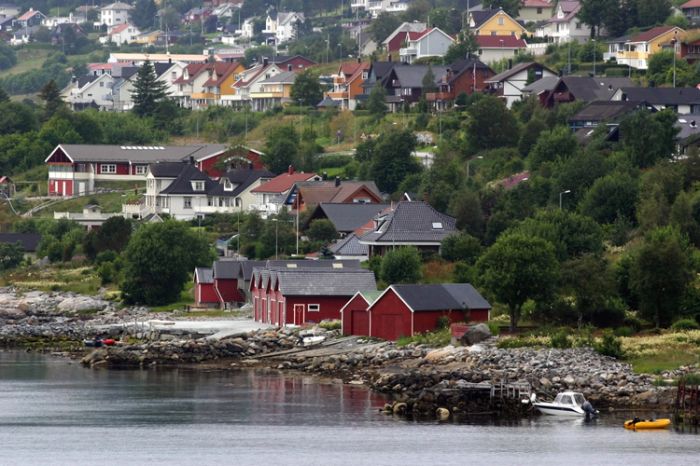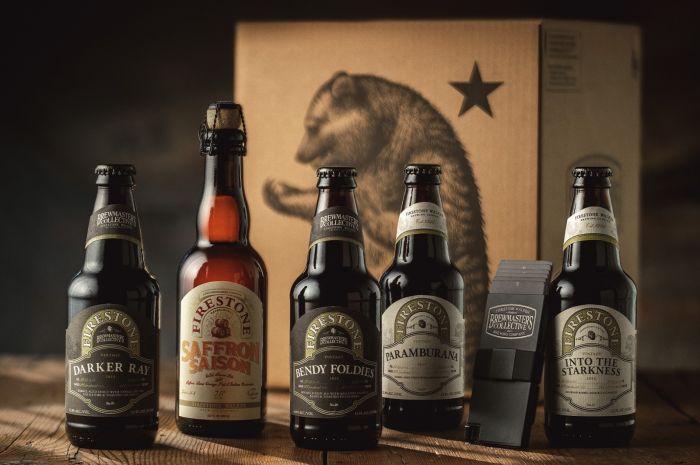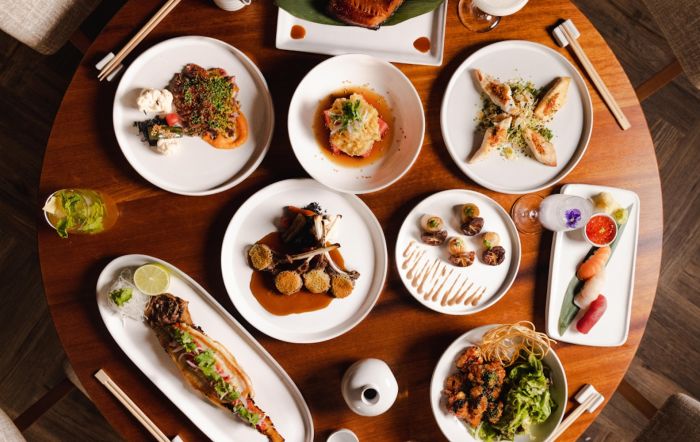
The Faroe Islands are a chain of 18 islands in the North Atlantic Ocean, northwest of Scotland and right between Iceland and Norway. The people of the islands have a true Viking heritage, with Norwegian and Celtic backgrounds. You can get there by taking the Faroese airlines, Atlantic Airlines...and financially, it makes sense to make a grand trip out of it by flying from Reykjavik, Iceland (other flight origin options include places like Denmark and Norway). If you prefer the sea to air, there are also car ferries that will take you to the Faroes from Iceland. In such a rarely remarked upon part of Europe, what do the people there eat? I first heard about the Faroes on Animal Planet's show Whale Wars, where its rather insufferable protagonist, Paul Watson, challenged the right of the islanders to eat what they've been eating for 1,000 years — the Pilot whale. You might be surprised to find that out that quite a few cultures consider whale a delicacy. The Pilot whale (which is quite small with a strong flavor) is what people mainly eat in the Faroes; there are several varieties of whale that people all over the planet enjoy.

While traditional restaurants can be great, you should definitely try out an in-home meal once or twice. In Søldarfjørður, a certain Mr. and Mrs. Hansen have what they call a "home visit" for lunch or dinner at their house — a private experience, though during busy times, there may be other diners present. In what was once the family's work shed (people in the Faroes do a lot of meat and fish drying) is the charming dinner space for visitors, where you will find vintage family photos and a large dining table. If you wish, you can also dine privately in their garden with a stunning vista of mountains and the sea. Make arrangements in advance for dinner, which will probably work out to be about $50 US per person. Additionally, they can arrange hiking in the nearby mountains, fishing, and even sheep farming!
The Hansens' son-in-law, Bogi Simonsen, serves as their translator and is a good advertisement for eating whale: athletic, proud and good-looking. He is quick to share stories of how whale harvesting and eating isn't something they thought of to do for tourists, it's serious survival food and a gourmet snack. At big events like weddings and major anniversary parties, they pass around whale like we pass around raw oysters. Dried whale meat and blubber are often served in little hors d'oeuvres pieces and is considered a treat amongst these hearty Viking descendants.
Whale harvesting isn't regulated, per se, in the Faroe Islands, but 500-year-old traditions and the local police keep things in check. For example, it's never sold in stores. Instead, the meat is given away — first cuts to the whalers, then to widows, orphans, the poor, hospital residents, then finally, to the remaining local residents. I asked if whale meat was ever used in combination recipes, like casseroles or perhaps an omelette. The answer? "Never!"
Dried whale is made by squeezing out the moisture from the long tubular loin cut for a few months. I heard that people in the southern islands of the Faroes, where it's incredibly remote, have more time and patience in drying the whale meat — it's supposed to be "the best."
Bogi told me that they eat the whale with bites of boiled potato, making a taste similar to that of a strong clam chowder. Dried whale has a beef jerky texture, but with a much stronger-than-anchovy flavor. The dried whale blubber has an oily, fruit roll-up texture. I really recommend trying it with the accompanying potato because when I tasted the whale without it first, the flavor simply was not for me.

Another common thing on their traditional appetizer platters is different forms of mutton. Mutton, providing more meat than a lamb, is prevalent in their way of life. The Hansens make their own dried mutton — like prosciutto — and fatty sausage, with a sharp onion flavor. This, you eat with homemade rye bread. While featuring bolder flavors than we are normally used to, mutton is fairly accessible to our palettes. Both whale and sheep have a strong odor, which you start to recognize when you pass people's drying sheds.
Yet another mainstay on their appetizer plates is dried fish, which is very accessible. The taste is pretty subtle as I've eaten anchovy crackers from Asian grocery stores in the States that were stronger. Dried fish is like Triscuits with a slight fish flavor. It's common in other places, such as Iceland, to spread them with a little butter.
Lena Hansen could make her fortune if she'd only can and sell her fish soup. Made with redfish and secret ingredients — I detected tomatoes, cream, hot sauce and chopped veggies — it puts most bouillabaisses to shame. It's rich, mild, sweet and addictive comfort food. Pure, cold water is the beverage at the house, by the way. I don't know if they'd go for BYOB or not, but beer would be great with this meal — especially when you consider the several excellent microbreweries on the islands.

The Faroe Islands are where some of the world's tastiest fish are caught. I tried a saltwater catfish caught that day by a friend of the Hansens', as well as locally farmed salmon. Both were excellent. The catfish was very tender and softer than cod, while the salmon was nicely cooked and seasoned with a seasoning salt. A gravy boat of fish sauce was served with the meal — creamy mild and delicate, seasoned with garden-grown scallions. It went well with the fish, though the fish was so fresh it didn't really require a sauce.
I don't know if vegetarians or vegans could thrive on the Faroe Islands because with the harsher climate and winds, it's hard to grow vegetables. Potatoes and a couple of root veggies, like carrots, can thrive but not much else. The only native fruit on the Faroe Islands is rhubarb! Rhubarb requires quite a bit of sugar to make it palatable, which is something to keep in mind. Lena Hansen makes a crustless cobbler with garden fresh rhubarb and an eggy custard cream, made with her own chickens' eggs.
Needless to say that if you decide on an excursion to the amazing Faroe Islands, you really need to check out the Hansen's private "home visit" to ensure a tasting of all foods the archipelago has to offer.
Start planning by contacting:
Garðavegur 27, Søldarfjørður, Faroe Islands
Phone number: (+298) 217841
Email: lena@e-post.fo














